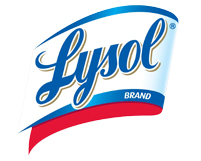Holiday Food Preparation Tips to Promote #HealthyFamilies
Holiday Food Safety
- Frequent handwashing before, after and during food prep.
- I rely on food thermometers to judge when items are cooked to the proper temperature. Once meals are cooked, keep hot foods hot and cold foods cold. I rely on slow cookers and electric roasting pans to keep hot entrees and dips on the buffet table above 140 degrees f. Cold items are rested on ice or placed on the table in small batches to prevent sitting out too long -keep them below 40 degrees f.
- Don't reuse forks, platters, and plates especially if they were used with raw meats or poultry. Don't forget to disinfect counters, cutting boards, and kitchen surfaces thoroughly.
 |
| Salmonella came to visit our home for 4 weeks thanks to dodgy food at a Labour Day picnic in 2011. |
After the guests go home and you're left with a mountain of food and dishes, my motto for dealing with leftovers is "when in doubt throw it out". You can't rely on sight or smell to know how bacteria may have contaminated your famous spinach dip.
I rely on disinfecting routines on a daily basis, but here is a list of my must-clean items especially after the party: door knobs, light switches, bathroom and kitchen taps/faucets, telephones, remote controls, and appliance handles.
The Hygiene Council released information to help educate people about bacteria and how it relates to our kitchens and food safety,
- Your kitchen sink contains 100,000 times more germs than a bathroom or lavatory.
- 9 of 10 kitchen cloths have unsatisfactory or worse levels of bacteria.
- 52% of kitchen taps found to be contaminated with harmful bacteria like Ecoli.
- 50-80% of food-borne illnesses happen in the home.
- Poor hygiene and food preparation can cause up to 90% of kitchen surfaces to be contaminated during the preparation of a meal.
- Bacteria can survive on surfaces for long periods of time. They can then be transferred to other surfaces (including the hands) in sufficient numbers to represent an infection risk.
- Disinfectants are more effective than detergents in reducing germs on floors.
- High chairs or places where children eat have worse levels of bacteria than toilet flushes.
Tips to fight bacteria:
- Use disposable cloths or soak reusable ones in disinfectant overnight to clean them.
- Store food in the fridge at 5°C, don’t overfill and make sure cold air can circulate.
- Disinfect the inside of your fridge regularly to remove microbes where food has dripped.
- Foot-operated bins are more hygienic because they reduce the risk of hands picking up germs touching the bin lid.
- Try using a quality antibacterial product that’s safe to use on food areas to remove harmful bacteria and viruses from your chopping board.
- Use different knives and boards for meat and vegetables to prevent cross-contamination.
- Remember to reheat at (at 70°C or above) and re-serve leftovers only once.
“Disclosure: I am part of the Lysol® Healthy Families Ambassador Program by Mom Central. I received compensation as part of my affiliation with this group. The opinions on this blog are my own. I am not a food safety expert. Please follow all food handling guidelines presented by the public health office in your region.



Comments
#HealthyFamilies